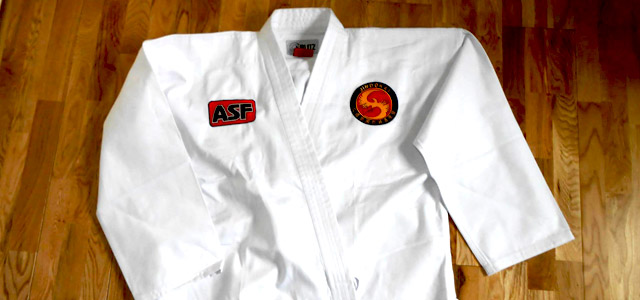There are certain things which will be expected of you in each martial arts lesson, as well as certain things you should come prepared for in the Jindokai martial arts classes. Here are a few things to bear in mind when attending Jindokai classes, as well as some of the terminology you will come across:
Jindokai: What to Expect
Jindokai is suitable for everyone regardless of fitness, age or gender. All we ask is that you do your best. This is a beginner’s class that will take students from the age of 5 upwards.
For your first class we ask that you wear tracksuit bottoms and a t-shirt, you will be asked to also fill in an insurance form and later on we can order you a Gi (uniform) if you wish to continue.
Costs/ Times
Main class (7-13) 6.00pm – 7.00pm
Adult class (14-upwards) 7.15pm – 8.15pm
Venue: Brackenbury Sports Centre, Felixstowe, Friday nights.
Membership: £10 for the year and includes free insurance
Class fees: Adults £6, Children £5 – pay when you train with us
Uniforms, sparring pads, gum shields, etc (these can either be bought directly from ASF or you can opt to buy your own if you wish).
Seminars and events (these are optional and fees will be announced at the time).
All costs will be kept to a minimum as we would like you to enjoy yourselves as much as possible. If you have any issues with regards to the costs please do not hesitate to contact us.
Gradings
Gradings take place twice a year.
You will be invited to grade when we see that you have progressed enough and are ready to move up to the next belt.
You will not be forced to grade at any point and if you fail for whatever reason your next grading will be free of charge.
Gradings cost £15 for 9th Kyu to 1st Kyu, then £30 for 1st Dan Black Belt
Terminology
Japanese Numbers 1 – 10
You will be expected to count to ten for your first belt in Jindokai so it’s important to know these numbers. See our FAQ page for a list of these numbers
1: Ichi
2: Ni
3: San
4: Shi
5: Go
6: Roku
7: Shichi
8: Hachi
9: Ku
10: Ju
In the Dojo
During classes you will hear the following instructions called:
Hajime: Start
Yame: Stop
Yoi: Get Ready
Kiai: Shout
Seiretsu: Line Up!
Mawate: Switch
Rei: Bow
You will also be expected to follow certain etiquette when entering and exiting the dojo including:
Standing bow (ritsurei)
Opening bows
“Shomen ni rei!” (Bow to the front of the room)
“Sensei ni rei!” (Bow to the instructor)
Closing bows
Bowing to your partner(s)
General Terms
Tsuki: Punching
Uchi: Striking
Geri: Kicking
Uke: Blocking
Body Parts
Atama: Head
Me: Eye
Kubi: Neck
Kata: Shoulder
Karada: Torso
Suigetsu: Solar Plexus
Ude: Arm
Hije or Empi: Elbow
Te: Hand
Ashi: Leg
Hiza: Knee
Koshi: Hip
Kakato: Heel
Ashi no yubi: Toes
Josokutei: Ball of Foot
Haisoku: Instep
Uchi (Strikes)
Gyaku Zuki: Reverse punch
Kizami Tsuki: Lunge punch/jab
Shuto uchi: Knife hand strike
Haito uchi: Ridge hand srike
Nukite: Spear hand
Teisho uchi: Palm strike
Uraken uchi: Back fist
Geri (Kicking)
Mae Geri: Front Kick
Yoko Geri: Side Kick
Ushiro Geri: Back Kick
Mawashi Geri: Roundhouse Kick
Hiza Geri: Knee Strike
Ushiro Geri: Back Kick
Jo/Chu/Ge Dan: High/Middle/Low
Keage: Snap
Kekomi: Thrust
Ido Kihon (Moving Basics)
Gedan Barai Uke: Downward Block
Age Uke: Rising Block
Uchi Uke: Inside Block (out to in)
Soto Uke: Outside Block (in to out)
Gyaku Zuki: Reverse Punch
Shuto Uke: Knife Hand Block
Oi Zuki: Forward Punch
